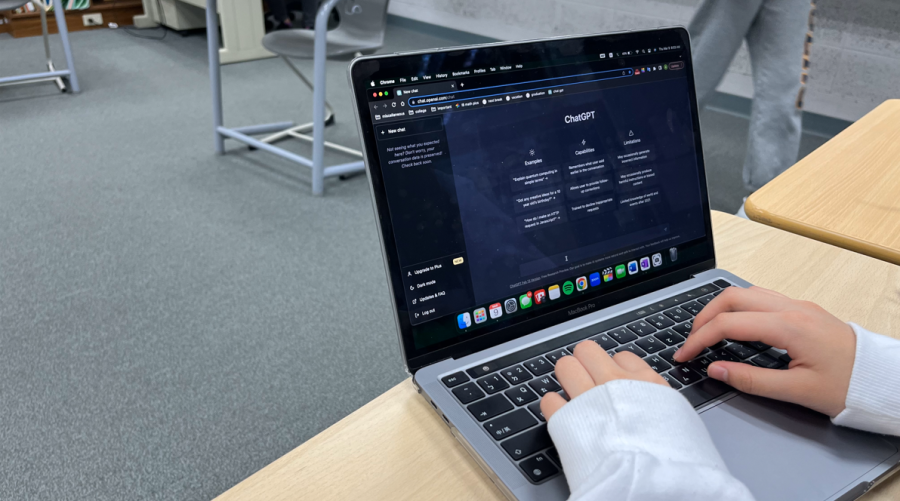By Mr. Kevin Held
While enhancing the natural powers of the amazing TAS actors, the technical theater elements can recede into the background, especially in a production like The Miracle Worker, where the actors are front and center in the arena staging. However, it takes a full complement of crew behind the scenes to make the magic happen. Over twenty students have been working since the first week of classes to present this show. From gluing beards and sewing costumes to hanging lights and building stairs, the crew members have learned how things work behind the scenes on a show of this caliber.
Costumes
The resident costume designer Jessica Huang and her crew worked hard to create a late 1800s period look and feel for the show. In addition to the visible layers of costumes, performers were in period bloomers and petticoats to maintain the period silhouette. Fabrics were purchased at Yongle Fabric Market and period clothing from Oliver! and other shows were pulled from the extensive costume stock.
Makeup and Hair
The Miracle Worker requires high school students to play characters who are much older. When Annie Sullivan arrived at the Keller house, Captain Keller was 51 years old, and Aunt Ev was even more advanced in years. Age-makeup workshops were conducted by Ben Nye Theatrical Makeup. Students practiced their age makeup skills for over a month before the first performance, and they also practiced women’s period hairstyling on both casts, other crew members and special mannequin heads for hairdressers. Under the direction of Joan Ho, the makeup and hair team played a special role in helping tell the story and set the time period accurately.
Lighting
There are multiple challenges of lighting a show in the round, including the risk of blinding the audience on the other side of any low angle light. Those challenges were compounded by the intimacy of the venue. Since this show relies heavily on the contrast between silence and speaking, it was not possible to use any scrollers on the instruments. Their fans motors would have been a distraction to the audience. The lighting plot relied heavily on eight Chroma-Q Colorforce 72s for general atmosphere. These are the same light fixtures featured in the Broadway musical Hamilton where they are built into the stage deck. The colors were supplemented by Selador Vivid Rs mounted below the seating units. The two student followspot operators were using 14 degree Source Fours mounted in CityTheatrical Followspot yokes. CityTheatrical’s equipment is standard in New York and London smaller theaters. The rest of the lighting package consisted of ETC Source Fours, all controlled by 2 universes of DMX by the ETC Ion lightboard. There were 76 lighting cues in this 90 minute play, executed with precision by the student stage manager.
Scenic Automation
Understage automation included a turntable built into the main deck. Visual act – artistic computer technology analog stage wagon controlled the movement of the turntable with a wireless remote control unit station operated a student in a ROH control station. Overstage automation included a flying second level, controlled by the house Waanger Biro CAT Rigging, with control positioned at FOH. The engineers in Luxembourg used this show to work on the routing software since we were using the third and fifth scenic pipe. In previous versions of the rigging software, only adjacent pipes could be kept in sync so we frequently experienced group data errors. The engineers have updated not only our software, but they have pushed out updates to other theaters using the same control system.
All scenery was constructed locally by ShiChi Entertainment, with close coordination with Visual act in Sweden and Waanger Biro in Luxembourg. All seating platforms are access stairs were constructed by the student crew here, and all the grey sound panels were painted here from stock scenic units.
Sound
The PA system consisted of d&b audiotechnik main speakers which usually serve as the stage monitors for the auditorium, supplemented by 4 d&b audiotechnik wedge monitors mounted beneath the main seating platforms, and 2 DAS wedge monitors under the other side seating sections. There were 16 MIPRO lav mics, controlled by a Yamaha TF5 digital mixer. All audio engineering was done by TopSound and a student sound technician operated all playback sound, from the underscoring to the sound effects of the train and the horses.
Visually, the overall design for The Miracle Worker – sets, costumes, hair, makeup, lights, props and sound – transports the audience to 1887 Tuscumbia, Alabama, home of the Keller family. The technical elements help the actors tell the story of Helen Keller and her teacher Anne Sullivan. The next time you enjoy a performance here at TAS or elsewhere, look carefully at all the details to see the handiwork of the technicians.
LETTER | Technical theater students are all Miracle Workers
October 9, 2019
![[Photo Courtesy of Mr. Dustin Rhoades for The Blue & Gold]](https://blueandgoldonline.org/wp-content/uploads/2019/10/play2.png)
[Photo Courtesy of Mr. Dustin Rhoades for The Blue & Gold]
0
Tags:
More to Discover




![A collection of college flags. [PHOTO COURTESY OF AMBER HU ('27)]](https://blueandgoldonline.org/wp-content/uploads/2025/05/IMG_5029-1200x577.jpeg)

![An SAT word cloud. [PHOTO COURTESY OF WORDCLOUDS]](https://blueandgoldonline.org/wp-content/uploads/2025/05/SAT.jpeg)
![Collage of banned books, including “The Handmaid’s Tale” by Margaret Atwood. [MINSUN KIM/ THE BLUE & GOLD]](https://blueandgoldonline.org/wp-content/uploads/2025/04/IMG_4274-1200x681.jpeg)

![A collage of dark romance book covers from an online store for dark romance novels. [PHOTO COURTESY OF TRILOGYOFROMANCE.COM.AU]](https://blueandgoldonline.org/wp-content/uploads/2025/04/IMG_4272-1200x600.png)